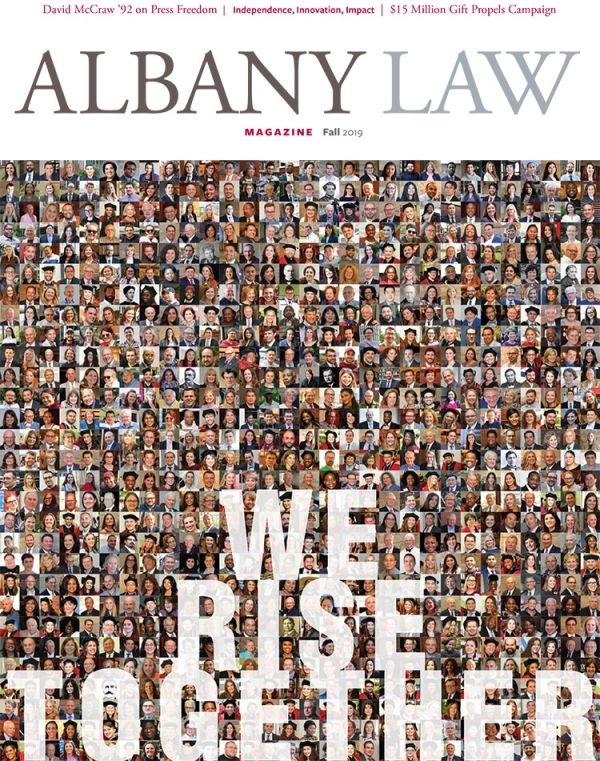Breger Takes on Unseen Influence in Bench Trials

ALTHOUGH JUDGES ARE SPECIALLY TRAINED AND DISCIPLINED to shield their decisions from prejudices, implicit biases inevitably ooze into the mix for the simple reason that humans are human, and research shows that the human brain generalizes. Those biases can be particularly dangerous in a bench trial, where the partiality of a single finder of fact replaces the presumably diffused predispositions of a jury or appellate panel.
In a new article, “Making the Invisible Visible: Exploring Implicit Bias, Judicial Diversity, and the Bench Trial”—published in the University of Richmond Law Review—Albany Law School Professor Melissa L. Breger explores strategies to decrease the threat of implicit bias affecting bench trials, considers whether a more diverse bench would yield more objective decisions, and sounds a call for quantitative scientific research to provide studied guidance. “My goal is ultimately to point out connections and associations I see; my hope is that others think meaningfully about those issues and my ideas for reform,” Breger said. “We have to understand how judges think. We have to realize that judges are human and implicit biases are often subconscious.”
Breger has written and lectured extensively on implicit bias and has previously suggested the taint of subconscious discrimination may be lessened to some degree when dispersed throughout a jury. That led her to ponder the effect of hidden biases when the finder of fact is not a jury of six or 12, but a single person. “Having one finder of fact may also create unique circumstances in which implicit biases can more readily manifest,” she wrote.
In her article, Breger raises questions that she hopes will provoke both thought and rigorous research, such as: Would diversifying the bench result in jurisprudence that is less likely to be contaminated by bias? Would judges who themselves have been the target of bias be more alert to rooting it out of their courtrooms? “We can never assume that all women judges will see certain types of cases one way, or that all African American judges will decide uniformly,” Breger said. “There is no monolithic voice of any particular judge. All judges need to be mindful of their own idiosyncratic biases, which is especially true when a judge believes he or she is not biased toward a particular group.”
Breger acknowledges that recent focus on implicit bias, which is now part of the curriculum at the New York State Judicial Institute at Pace Law School and a CLE requirement for all New York lawyers, has raised awareness of hidden or ingrained preconceptions and prejudices. But she warns that while biases rooted in malice are the most troublesome, even presumptions that do not involve negative stereotypes are incompatible with the goal of dispassionate jurisprudence. “Even though implicit biases can be damaging, such biases are not necessarily rooted in hate and negativity,” Breger wrote. “At times, biased thinking can be mistakenly construed as complimentary to a particular group, even though the so-called positive stereotype itself brings with it harm. Because implicit biases are not generally deliberate or malicious, however, they can be that much harder to identity and to eradicate.”
Breger said her writing naturally informs her teaching, and her teaching informs her writing. In attempting to encourage critical thinking on the part of her students, she is challenged to do the same. “In law school education, we all teach the same body of law,” Breger said. “Whether it’s case law or federal rules of evidence, those are the same. We should also be teaching our students to be critical thinkers and nurturing our students’ intellectual growth. In that way, Albany Law School is unique. We are small and close-knit, so we are able to nurture individualized connection between students and faculty.”
PRINT ISSUE
Click for downloadable PDF

